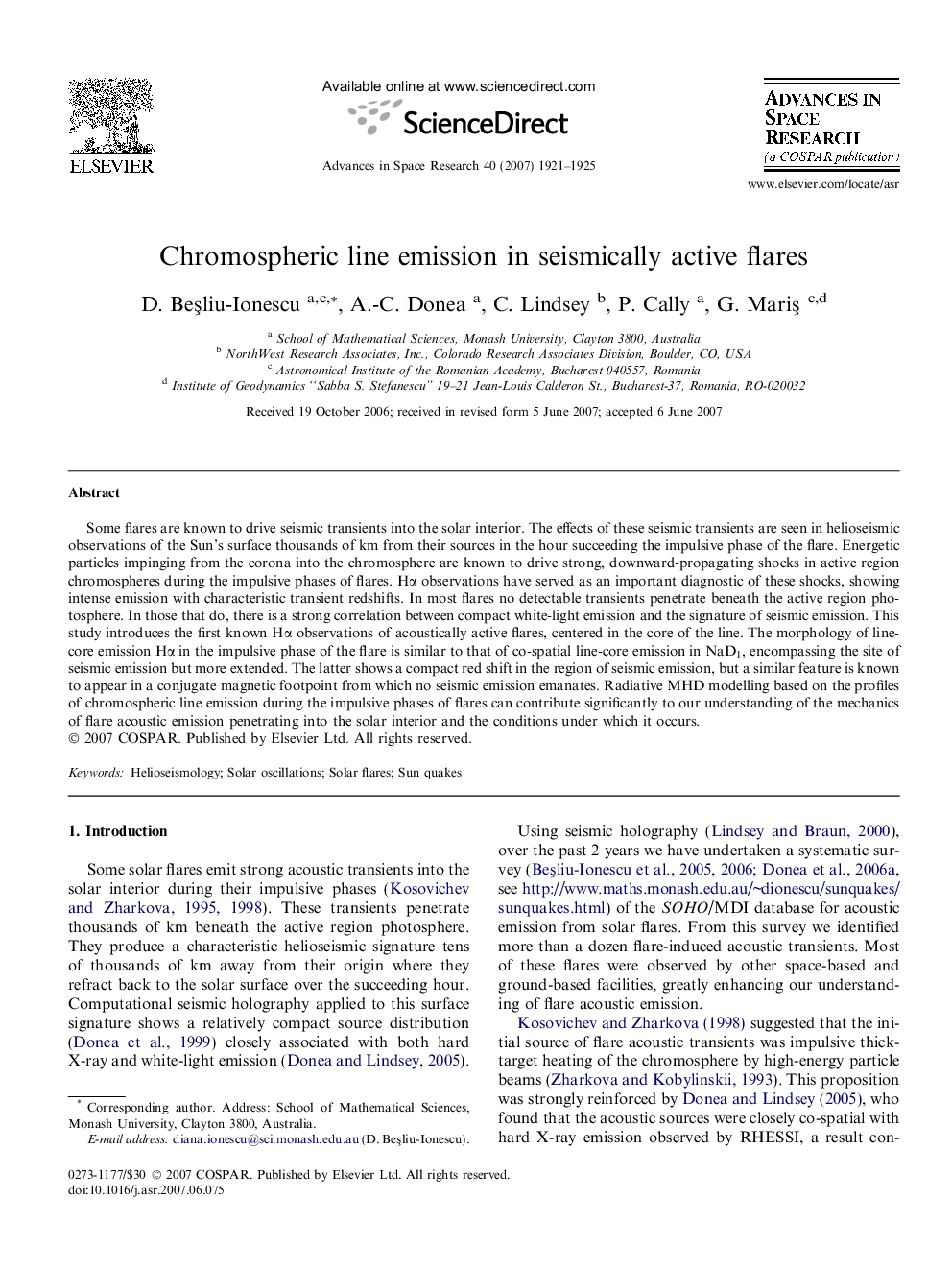| Article ID | Journal | Published Year | Pages | File Type |
|---|---|---|---|---|
| 1767581 | Advances in Space Research | 2007 | 5 Pages |
Abstract
Some flares are known to drive seismic transients into the solar interior. The effects of these seismic transients are seen in helioseismic observations of the Sun's surface thousands of km from their sources in the hour succeeding the impulsive phase of the flare. Energetic particles impinging from the corona into the chromosphere are known to drive strong, downward-propagating shocks in active region chromospheres during the impulsive phases of flares. Hα observations have served as an important diagnostic of these shocks, showing intense emission with characteristic transient redshifts. In most flares no detectable transients penetrate beneath the active region photosphere. In those that do, there is a strong correlation between compact white-light emission and the signature of seismic emission. This study introduces the first known Hα observations of acoustically active flares, centered in the core of the line. The morphology of line-core emission Hα in the impulsive phase of the flare is similar to that of co-spatial line-core emission in NaD1, encompassing the site of seismic emission but more extended. The latter shows a compact red shift in the region of seismic emission, but a similar feature is known to appear in a conjugate magnetic footpoint from which no seismic emission emanates. Radiative MHD modelling based on the profiles of chromospheric line emission during the impulsive phases of flares can contribute significantly to our understanding of the mechanics of flare acoustic emission penetrating into the solar interior and the conditions under which it occurs.
Related Topics
Physical Sciences and Engineering
Earth and Planetary Sciences
Space and Planetary Science
Authors
D. BeÅliu-Ionescu, A.-C. Donea, C. Lindsey, P. Cally, G. MariÅ,
